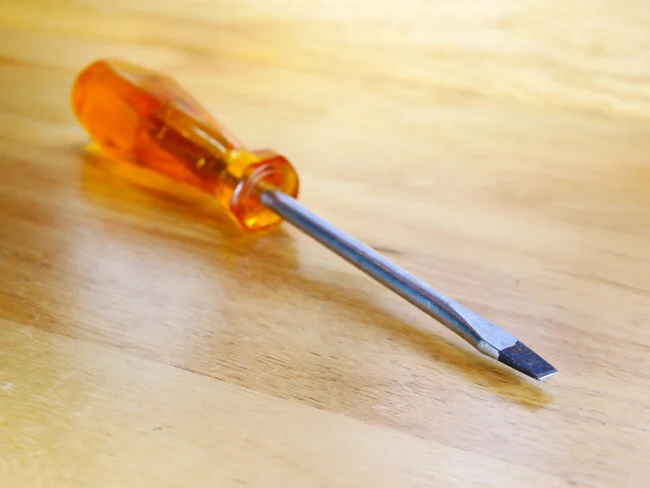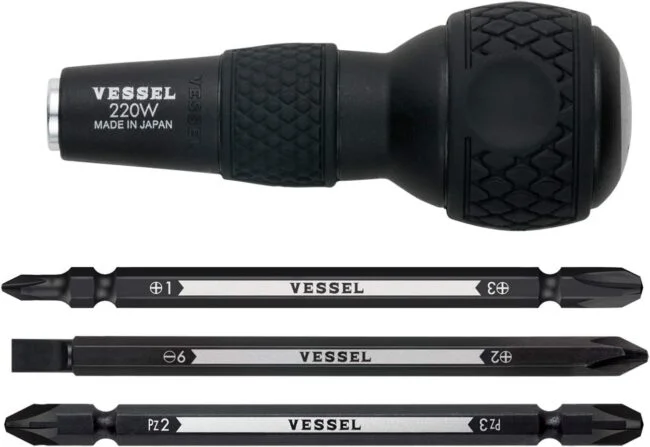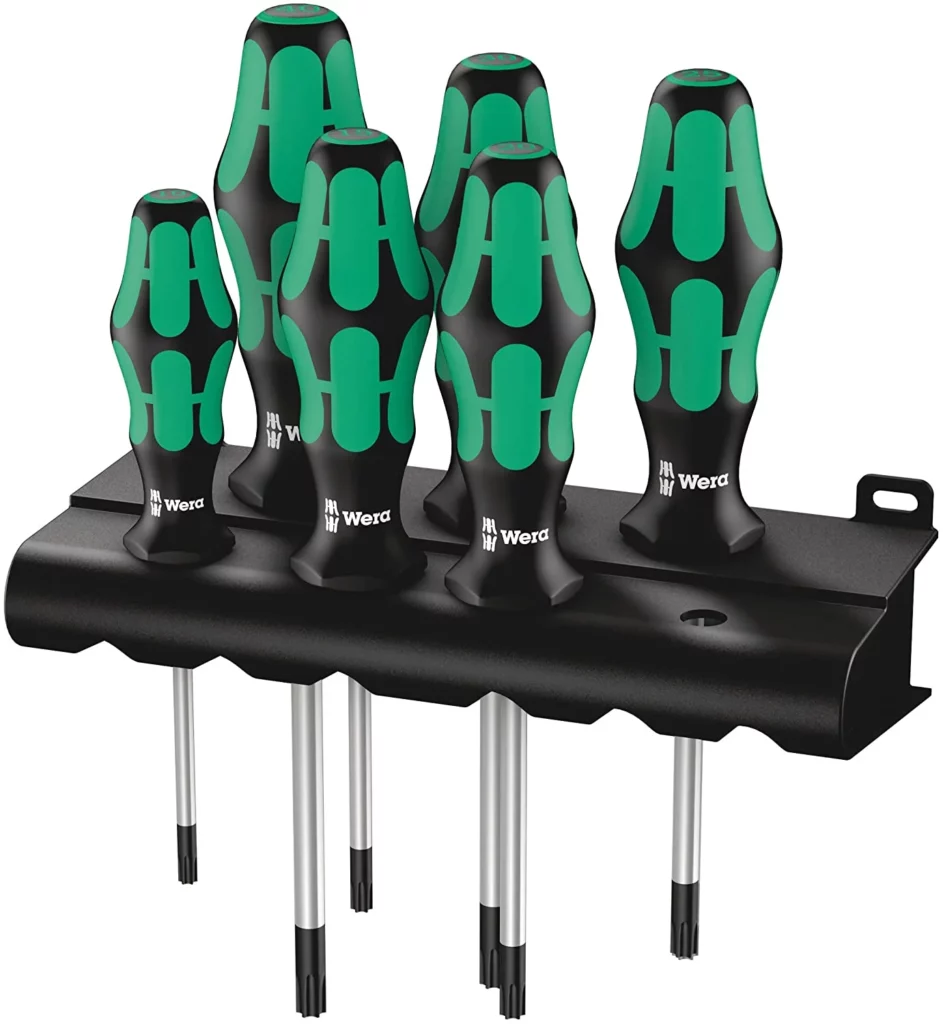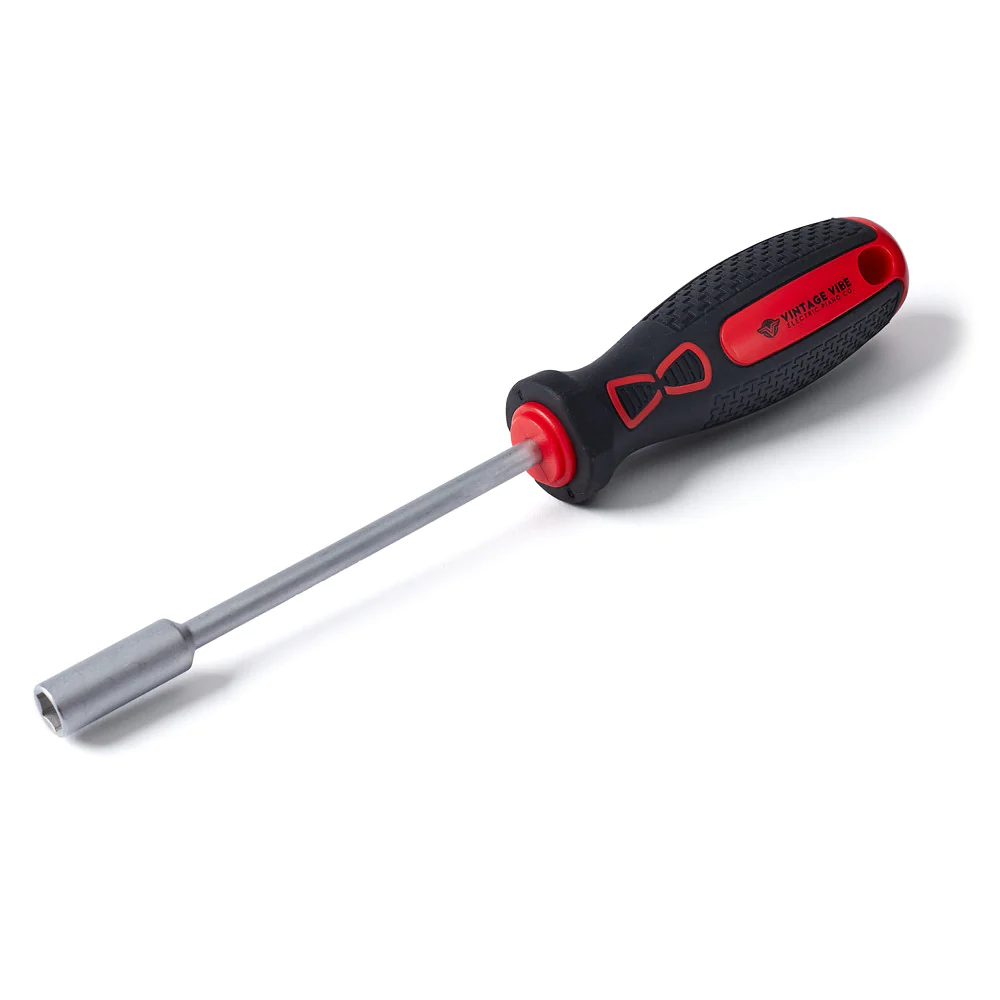Types of Screwdriver Heads: The Unsung Heroes of Precision
Screwdrivers stand as the quintessential tools in the realm of both do-it-yourself enthusiasts and seasoned professionals. These unassuming instruments, often overlooked, play a pivotal role in myriad applications, ranging from routine household fixes to intricate mechanical undertakings. Their significance lies in their ability to secure, adjust, and disassemble an assortment of fasteners with accuracy and finesse. In this comprehensive guide, we embark on an exploration of the diverse universe of screwdriver heads, each tailored to address specific fastening needs. By delving into the nuanced characteristics and functionalities of various screwdriver types, we unveil the key to unlocking efficiency and precision in an array of tasks.
As we proceed, we will illuminate the distinctive attributes of flathead, Phillips, Pozidriv, Torx, Hex, and Robertson screwdrivers, among others. Through meticulous examination, we will unveil the optimal scenarios for employing each, empowering both novices and professionals to select the most suitable tool for any given endeavor.
Join us on this insightful journey as we unravel the indispensable roles that these unassuming yet indispensable tools play in the world of craftsmanship and engineering. By understanding the nuances of screwdriver heads, you will not only elevate your proficiency but also cultivate a deeper appreciation for the artistry of precision workmanship.
Screwdriver Parts
Understanding the various components of a screwdriver is fundamental to using this versatile hand tool effectively. A comprehensive grasp of the screwdriver’s parts not only facilitates precise operation but also helps in maintenance and longevity. In this section, we will dissect the anatomy of a screwdriver, shedding light on the essential parts and their respective functions.
- Handle: The handle, also known as the grip, is the section of the screwdriver that you hold. Handles come in various materials, including plastic, rubber, and wood, designed to provide a comfortable and ergonomic grip. The handle’s shape and material play a crucial role in reducing user fatigue during extended use.
- Shaft: The shaft is the elongated metal rod that extends from the handle to the tip. It is an integral part of the screwdriver, as it provides the necessary leverage to turn the screw. Shafts come in different lengths, and the choice depends on the depth and accessibility of the screw you are working with.
- Tip: The tip of the screwdriver is the end that comes into contact with the screw head. Screwdrivers come in a variety of tip shapes, each designed for specific screw head types, as discussed earlier in this post. The correct choice of tip is essential for a secure and effective grip on the screw.
- Shank: The shank is the portion of the shaft between the handle and the tip. It is where the shaft transitions from its handle attachment to the working tip. The shank provides stability and rigidity to the screwdriver.
- Ferrule: A ferrule is a collar or band located near the junction of the handle and shaft. It serves to reinforce this connection point, preventing the handle from splitting or cracking under pressure.
- Tang: The tang is the part of the shaft that is inserted into the handle. It is typically square or hexagonal in shape to prevent the shaft from rotating within the handle. This feature ensures that the force applied to the handle is efficiently transferred to the tip.
- Hex Bolster: Some screwdrivers, particularly those with hexagonal shafts, feature a hex bolster. This is a flat surface just below the handle designed to accommodate a wrench or pliers for additional turning force when dealing with stubborn or tightly fastened screws.
Types of Screwdrivers
1. Flathead (or Slotted Head) Screwdriver
The flathead, or slotted, screwdriver stands as one of the most enduring and widely recognized tools in the realm of fasteners. Its simplicity belies its significance, as this tool finds itself indispensable across a multitude of applications and scenarios. The flathead screwdriver is distinguished by its flat, tapered blade which narrows to a point. It aligns perfectly with screws featuring a single horizontal groove, commonly known as slotted screws. This straightforward design imparts a level of versatility that has made the flathead screwdriver a staple in toolkits worldwide.
Common Applications
- General Household Maintenance: In the realm of household maintenance, the flathead screwdriver emerges as an invaluable companion. It finds purpose in tasks ranging from tightening cabinet knobs to assembling furniture, displaying its adaptability to various domestic requirements.
- Electrical Work: Within the sphere of electrical work, the flathead screwdriver’s slender profile allows it to access recessed and confined spaces with ease. This makes it an essential tool for tasks such as securing electrical outlets, switches, and junction boxes.
- Carpentry and Woodworking: In carpentry and woodworking endeavors, the flathead screwdriver is frequently employed for tasks involving softer woods or when a delicate touch is required. Its broad, flat blade exerts force evenly, reducing the likelihood of marring the surface of the material.
- Historic and Vintage Applications: Given its historical precedence, the flathead screwdriver is often the preferred tool for tasks involving antique or vintage items. It is aptly suited for preserving the integrity of aged materials, ensuring a respectful restoration process.
2. Phillips Screwdriver
The Phillips screwdriver, named after its inventor Henry F. Phillips, has achieved widespread popularity owing to its distinct design and undeniable advantages over the traditional flathead screwdriver. In this section, we delve into the reasons behind the Phillips screwdriver’s prevalence and its optimal utility in various applications.
Common Applications for Phillips Screwdrivers:
Phillips screwdrivers find extensive application in a variety of settings and scenarios. Some common areas where the Phillips screwdriver excels include:
- Household Repairs: Phillips screws are frequently encountered in household items such as furniture, appliances, and fixtures. The Phillips screwdriver’s ability to securely drive and remove these screws makes it a staple tool for homeowners and DIY enthusiasts.
- Electronics: Many electronic devices, from laptops to smartphones, utilize Phillips screws due to their tamper-resistant properties. In such cases, a Phillips screwdriver is indispensable for maintenance, repair, and upgrades.
- Automotive Industry: The automotive sector widely employs Phillips screws, especially in interior components like dashboards, door panels, and upholstery. Mechanics and car enthusiasts rely on Phillips screwdrivers for these applications.
- Woodworking: Phillips screws are chosen for their reliability in woodworking projects, ensuring that joints and connections remain sturdy over time. Cabinets, bookshelves, and other wooden structures often require the use of a Phillips screwdriver.
- Construction: In construction, Phillips screws are employed in various structural and finishing applications. Their ability to handle higher torque levels and resist slippage is advantageous when securing materials for building projects.
3. Pozidriv Screwdriver
The Pozidriv screwdriver stands as a testament to the continuous evolution of tool technology, offering distinct advantages over its predecessor, the Phillips screwdriver. Understanding the disparities between these two tools is crucial for informed decision-making in various applications. Below, we delineate the disparities and expound on scenarios where the Pozidriv screwdriver emerges as the most pragmatic choice.
Common Applications
The Pozidriv screwdriver shines in a variety of scenarios, making it the preferred choice in numerous professional and DIY settings:
- Woodworking: Pozidriv screws are frequently used in woodworking, especially in applications where the fasteners need to withstand substantial stresses. The enhanced grip of the Pozidriv screwdriver ensures that screws can be driven into hardwoods and other materials without slippage or damage.
- Automotive Industry: Pozidriv screws and drivers are commonly found in the automotive sector, specifically in engine assembly, bodywork, and interior installations. Their robust connection prevents loosening due to vibrations and mechanical stress.
- Construction: Pozidriv screws are favored in construction projects, where the need for secure and lasting connections is paramount. They are often used in structural components and fixtures.
- Furniture Assembly: When assembling furniture, Pozidriv screws are prevalent due to their ability to provide a strong and stable connection. This ensures that your furniture remains sturdy over time.
- Heavy Machinery: Pozidriv screws find applications in heavy machinery and industrial equipment, where durability and reliability are of utmost importance.
4. Robertson (or Square) Screwdriver
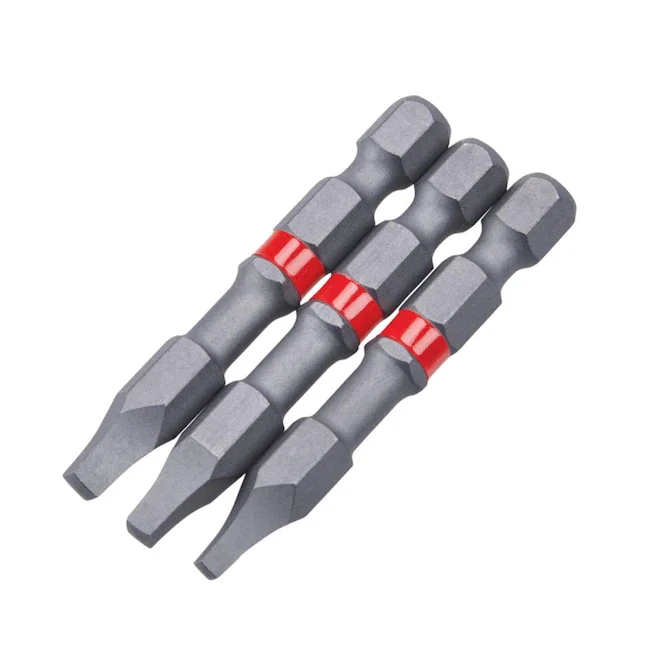
The Robertson screwdriver, distinguished by its square-shaped tip, stands as a testament to its inventor, P.L. Robertson, who designed it to address the limitations of slotted and Phillips screwdrivers. This innovative design provides several advantages in terms of stability, torque transmission, and reduced risk of slipping during operation.
Common Applications
- Woodworking and Carpentry: The Robertson screwdriver finds its most prevalent use in woodworking and carpentry applications. Its square tip provides a secure grip on screws, minimizing the risk of slippage or cam-out. This characteristic makes it particularly valuable for tasks involving hardwoods, where precision and control are paramount.
- Construction and Decking: In the construction industry, the Robertson screwdriver has become a preferred tool for fastening various materials, including plywood, OSB, and decking boards. Its efficient torque transfer capabilities, combined with the reduced likelihood of stripping or damaging the screw head, contribute to smoother and more reliable installations.
- Furniture Assembly: When it comes to assembling furniture, the Robertson screwdriver’s square tip proves invaluable. It ensures a tight, secure fit during the assembly process, reducing the chances of misalignment or wobbling joints over time. This makes it an indispensable tool for both professional furniture builders and DIY enthusiasts.
- Electrical Work: In electrical applications, where precision and reliability are paramount, the Robertson screwdriver plays a crucial role. Its square tip provides a stable connection with electrical terminals, reducing the risk of slippage or damage during installation. This is particularly critical in situations where electrical connections must be secure to ensure safety and performance.
- Automotive and Machinery: The Robertson screwdriver also finds its place in automotive and machinery maintenance and repair. Its ability to apply consistent torque without the risk of slippage proves invaluable when dealing with critical components. This reliability contributes to efficient and effective maintenance practices.
5. Torx (or Star) Screwdriver
The Torx, or Star, screwdriver is a specialized tool designed to engage with Torx screws, characterized by their star-shaped recesses. This unique design offers several distinct advantages over traditional screw heads, making them indispensable in specific applications.
Common Applications:
- Electronics and Appliances: Torx screws are frequently used in the assembly of electronic devices such as laptops, smartphones, and gaming consoles. Their design provides enhanced torque transmission, reducing the risk of slippage during assembly or disassembly.
- Automotive Industry: Torx screws have found widespread use in the automotive sector, particularly in components like brake systems, engines, and interior panels. Their increased resistance to cam-out (slipping) under high torque loads makes them a preferred choice in this demanding environment.
- Construction and Woodworking: Torx screws are well-suited for applications involving wood and construction materials. Their deep, multi-point engagement ensures a secure hold, making them ideal for structural elements, cabinets, and furniture assembly.
- Aerospace and Aviation: Torx screws are extensively utilized in the aerospace industry for their reliability and ability to withstand extreme conditions. They are employed in critical components such as aircraft engines, control systems, and avionics.
- Medical Devices: The precision and stability offered by Torx screws make them a staple in the production of medical equipment and devices. Their resistance to wear and tear, along with the ability to maintain precise torque, is crucial in this field.
- Security Fasteners: Torx screws are also utilized in security applications where tamper resistance is paramount. The design of Torx screws makes them inherently more resistant to unauthorized removal, providing an additional layer of security.
6. Hexagon (Hex) Screwdriver
The Hex (Allen) screwdriver, distinguished by its hexagonal or six-sided tip, is a versatile hand tool that finds its niche in a variety of specialized applications. Known for its exceptional grip and effectiveness, the Hex screwdriver is a must-have for professionals and enthusiasts alike. In this section, we will delve into the common applications and scenarios where a Hex screwdriver is the most suitable choice.
Common Applications:
- Furniture Assembly: Hex screws are commonly used in furniture assembly, such as ready-to-assemble (RTA) cabinets, shelves, and other wooden or metal furnishings. The Hex screwdriver’s hexagonal tip perfectly fits the corresponding hexagonal socket in these screws, providing a secure grip and preventing slippage, which can lead to damaged screws or injuries.
- Bicycle Maintenance: In the world of bicycles, Hex screws are widely employed for securing components like handlebars, seat posts, and brake calipers. The Hex screwdriver ensures a firm and precise connection, contributing to the safety and stability of the bike.
- Automotive Repairs: Some automotive components, especially in European and German cars, feature Hex screws. These include parts like engine covers, transmission pans, and brake calipers. The Hex screwdriver’s ability to transmit high torque makes it the perfect tool for these applications.
- Machinery and Equipment: Industrial machines and equipment often utilize Hex screws to withstand heavy loads and vibrations. The Hex screwdriver offers reliable fastening in such settings, ensuring the machinery functions smoothly.
- Electronics and DIY Projects: Certain consumer electronics and do-it-yourself (DIY) kits incorporate Hex screws for securing components and casings. The Hex screwdriver’s precision is invaluable when working with delicate electronics and smaller-scale projects.
- Hex Key Sets: Hex key sets, consisting of a variety of Hex screwdrivers, are indispensable for professionals and hobbyists. These sets encompass a wide range of sizes, making them adaptable to countless applications.
7. Tri-Wing Screwdriver
In the realm of precision tools, Tri-wing and Security screwdrivers stand as stalwart guardians against unauthorized access. These specialized instruments are meticulously designed to navigate the labyrinthine world of tamper-resistant fasteners, where standard tools falter.
- Tri-wing Screwdrivers: Characterized by their distinctive three-winged tips, Tri-wing screwdrivers find their niche in applications demanding an added layer of security. These screws are commonly encountered in electronics, such as gaming consoles, where manufacturers employ them to deter unauthorized tampering.
- Security Screwdrivers: These counterparts are engineered to engage with security screws, equipped with a unique pattern that resists conventional screwdrivers. Their deployment extends beyond electronics, finding crucial roles in safeguarding sensitive compartments of machinery and equipment.
Common Applications
- Electronics Industry: In the dynamic landscape of electronics, Tri-wing and Security screwdrivers play pivotal roles in securing access points to sensitive components. From smartphones to gaming consoles, these specialized tools ensure that only authorized personnel can navigate the internal workings.
- Machinery and Equipment: In the industrial realm, Security screwdrivers find their calling in protecting critical elements of machinery. These screws are deployed in scenarios where unauthorized access could lead to operational hazards or compromise proprietary technology.
8. Nut Drivers
Nut drivers, also known as nut screwdrivers, are specialized hand tools designed for turning nuts and bolts. These drivers offer unique advantages in specific applications, thanks to their construction and ergonomic design. In this section, we will delve into the common applications and scenarios where a nut driver proves to be the most suitable choice.
Automotive Maintenance and Repair
Nut drivers find frequent use in the automotive industry, where they are indispensable for various tasks. Some common applications in automotive maintenance and repair include:
- Fastening or Loosening Lug Nuts: Changing tires and wheels requires precision and control, making nut drivers a preferred choice for securing lug nuts.
- Engine and Transmission Work: Nut drivers are often used for tasks like tightening engine mounts and transmission bolts, where precise torque is essential.
- Interior Trim and Panel Removal: The compact size and comfortable grip of nut drivers make them ideal for removing interior trim and panel fasteners without damaging delicate surfaces.
Electrical and Electronics
In the electrical and electronics industry, nut drivers play a crucial role in ensuring secure connections and precise adjustments. Some typical applications include:
- Terminal Blocks: Nut drivers are employed for tightening terminal screws, ensuring reliable electrical connections in electrical panels and control boxes.
- Circuit Board Assembly: In electronics manufacturing, nut drivers are used to fasten standoffs, spacers, and various components securely in place.
- Adjusting Potentiometers: The fine control offered by nut drivers is invaluable for adjusting potentiometers and trimmers in electronic circuits.
Plumbing and HVAC
Nut drivers are also frequently utilized in plumbing and HVAC (Heating, Ventilation, and Air Conditioning) systems for various purposes:
- Securing Hose Clamps: Nut drivers are ideal for securing hose clamps on pipes, ensuring a tight and leak-free connection.
- Thermostat Installation: HVAC professionals often rely on nut drivers when installing thermostats and securing mounting brackets.
- Flue Pipe Assembly: Nut drivers assist in assembling and tightening flue pipes in HVAC systems, preventing potential leaks.
Furniture Assembly
When assembling furniture, especially flat-pack items, nut drivers offer efficiency and ease of use. They are commonly used for:
- Furniture Fasteners: Nut drivers provide the necessary torque to tighten bolts, screws, and nuts used in the assembly of bookshelves, cabinets, and other furniture items.
- Connecting Metal Parts: In furniture that incorporates metal components, such as bed frames or desk legs, nut drivers ensure stable connections
Final Thoughts: Types of Screwdriver Heads
Understanding the diverse range of screwdriver heads and their respective applications is pivotal for any DIY enthusiast or professional tradesperson. Each type serves a unique purpose, offering precision and efficiency in various tasks. From the ubiquitous flathead and Phillips screwdrivers to specialized drivers like Torx and Robertson, having a comprehensive set equips one to tackle a wide array of projects. Additionally, the inclusion of nut drivers in one’s toolkit proves invaluable in industries spanning automotive, electronics, plumbing, and furniture assembly. By investing in a well-rounded selection of screwdrivers and nut drivers, individuals can approach their projects with confidence, knowing they have the right tool for the job at hand.

